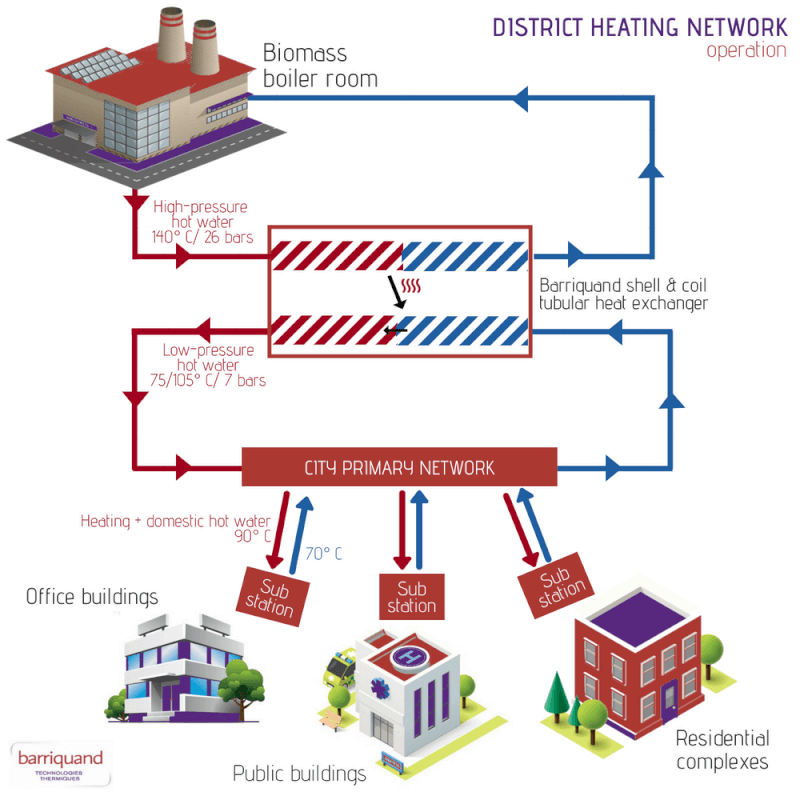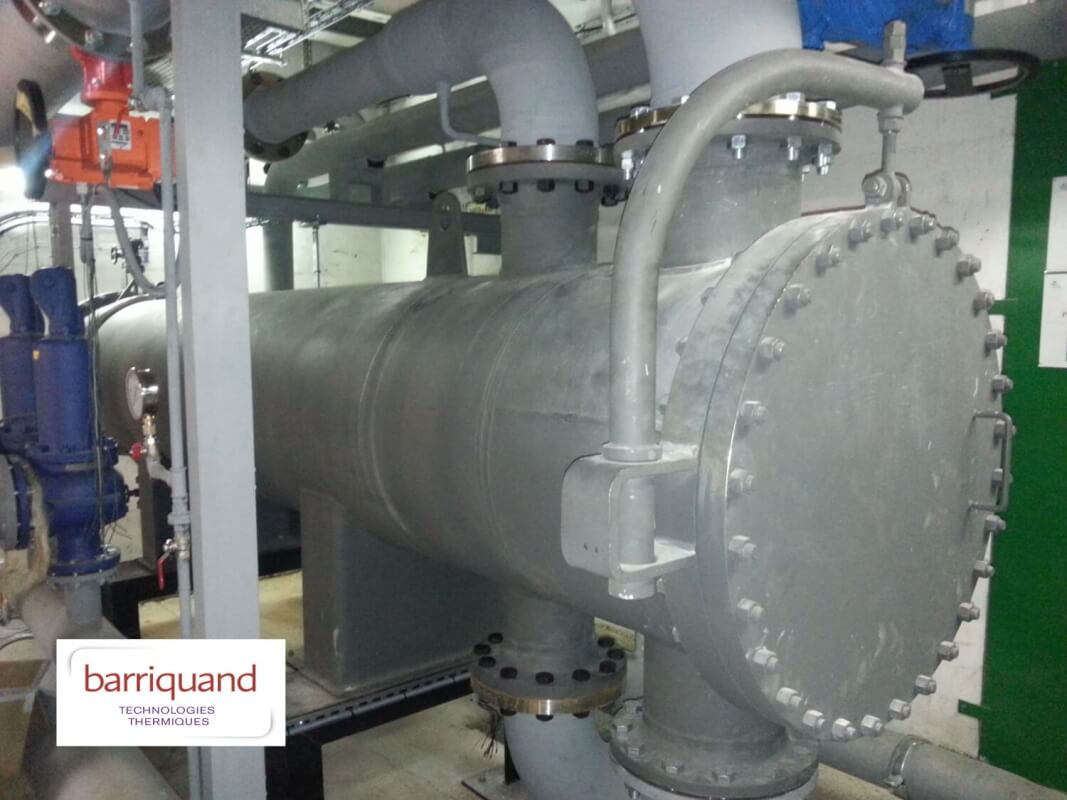[Case study] Shell & Coil heat exchangers on a district heating HP network
A 30% gain in performance and compact units that respect footprint constraints: Barriquand designed these Tubular Shell&Twist® to be inserted into a superheated water / hot water exchange station within a district heating network.
[Case study] Shell and Coil heat exchangers on a district heating HP network in Paris
A 30% gain in performance and compact units that respect footprint constraints: Barriquand designed these Tubular Shell&Twist® to be inserted into a superheated water / hot water exchange station within a district heating network.
Durable energy to heat cities
Initially coal-fired, this heating network situated in Paris has been working on energy diversification for several years now, going towards cleaner and cleaner solutions: fuel, then gas and finally wood, bio methane or geothermal science…
This global technological project, which allows to heat municipalities with over 50 % of renewable energies, involves setting-up biomass boiler rooms and cogeneration plants to produce electricity and heat simultaneously.
The various boiler rooms feed a high-pressure superheated water network at 140°C and 26 bars from which calories are recovered by the heat exchanger to warm the water intended for the district heating network (75/105°C, calculated at 12 bars).
NB: the use of substation heat exchangers situated at building inlets reduce the temperature and water pressure feeding radiators inside homes.

Barriquand’s Shell&Twist® technology: increased exchange coefficient, requires less space
We designed heat exchangers with twisted tubes which offer performance gains of about 30 % compared to classic tubular heat exchangers and a better performance/bulk report than certain compact plate heat exchangers.
The shape of the tubes creates a “whirlpool” effect which increases the turbulence inside, whereas the absence of transversal chicanes and contact points between tubes eliminates the risk of vibrations. The speed of the water circulating in the shell is boosted, which contributes to increase the exchange coefficient.
By reducing the heat exchange surface, we obtain a more compact device which responds to tough installation constraints, access to equipment is via a small trapdoor (190 cm X 120 cm).These tubular heat exchangers are designed and made in our Saint-Priest workshop in France.

Regulatory requirements and easy maintenance
Thanks to our quality certifications, calculating and manufacturing our heat exchangers meet the requirements of the DESP (Pressure Equipment Directive) module H1 – category IV to which are subjected the units that equip the superheated water networks.
In particular, this involves the validation of studies by our organization and additional tests during manufacturing: X-rays, ultrasounds, dye penetrant tests…
These self-cleaning, reliable units can be easily cleaned by recirculation or chemically inside the tubes (the network water is more fouling than the superheated water which is subjected to more stringent cleanliness constraints), therefore maintenance costs are reduced.

